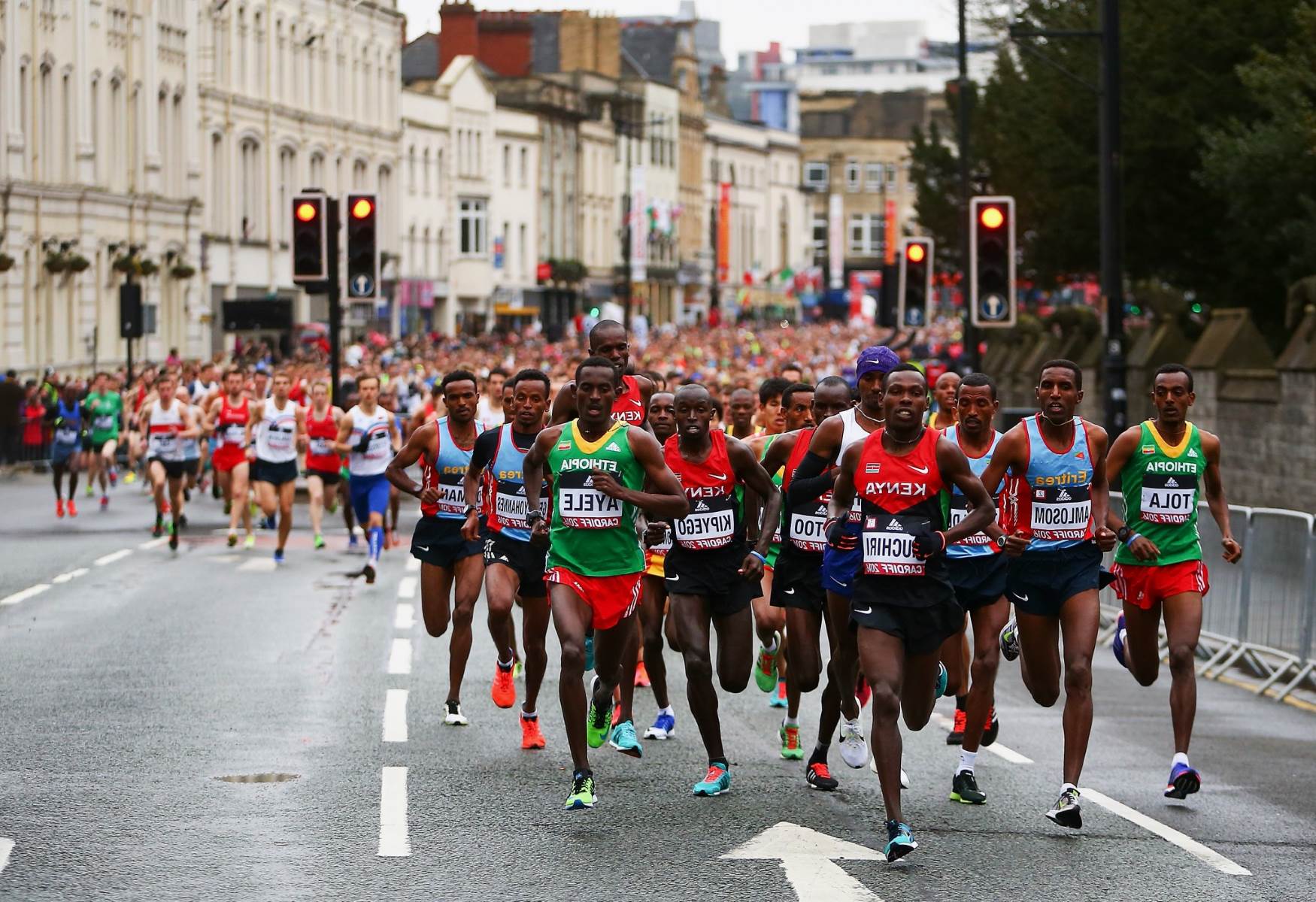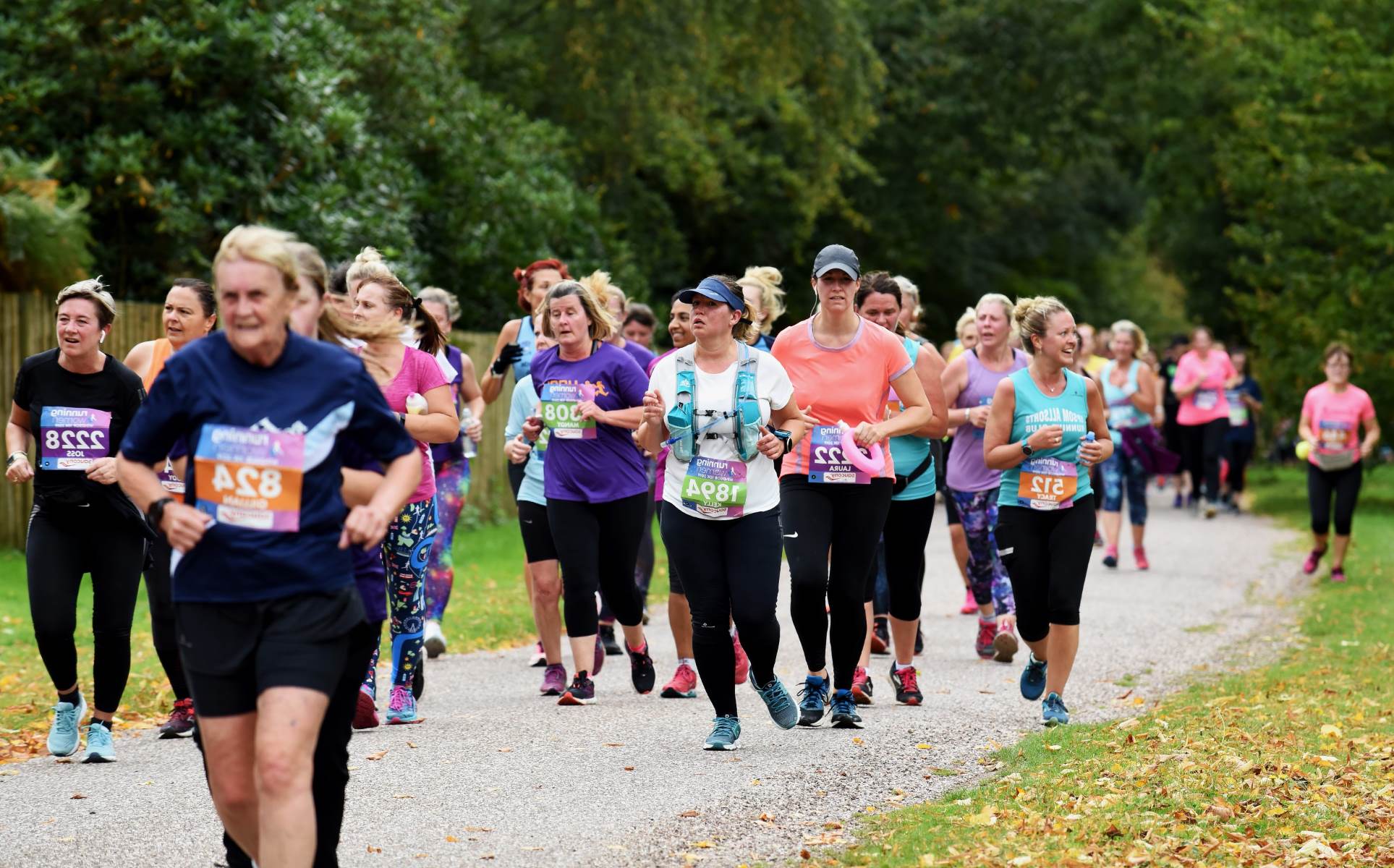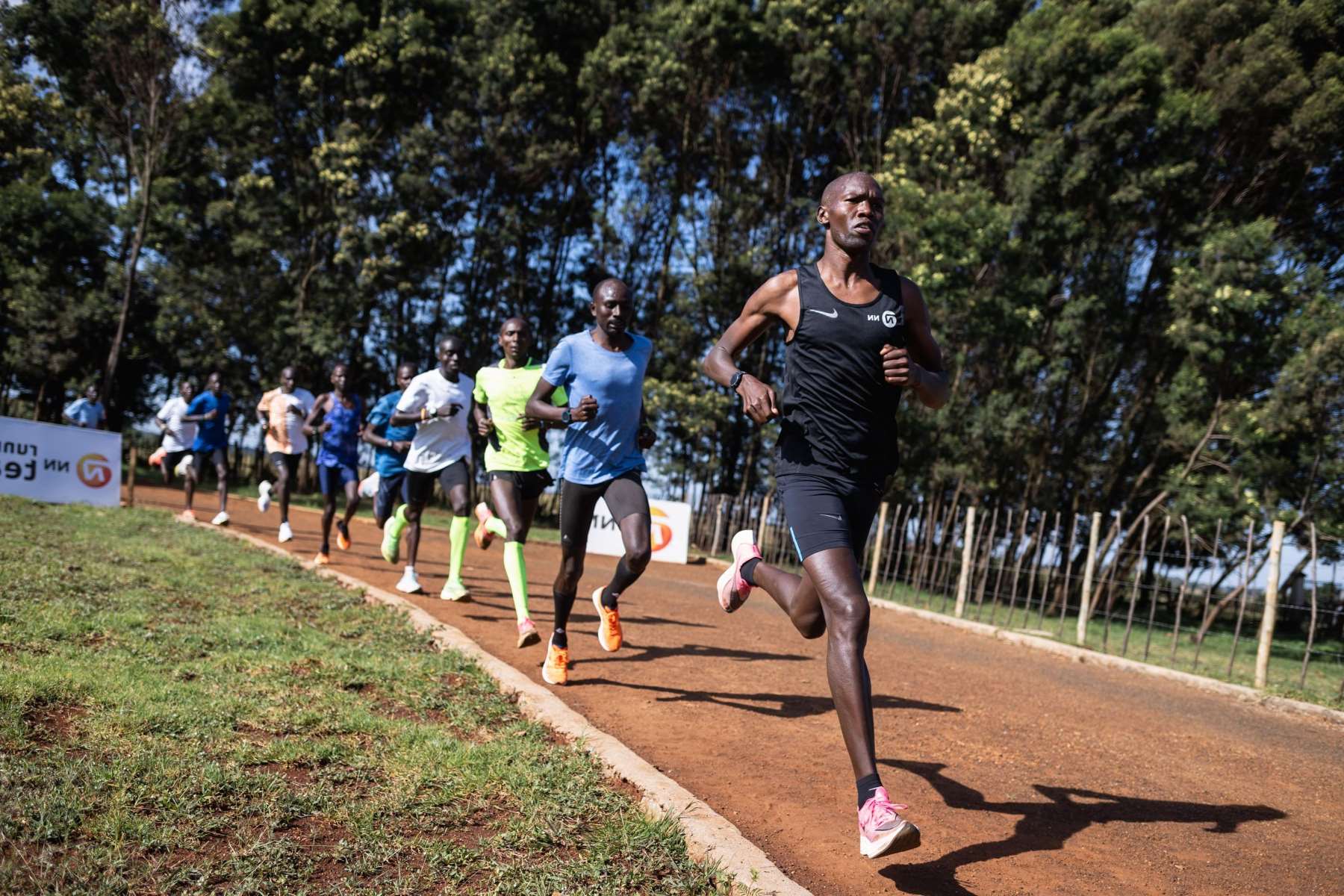Home>Training & Techniques>Tips For Enhancing Your 5K Running Performance


Training & Techniques
Tips For Enhancing Your 5K Running Performance
Published: February 28, 2024
Improve your 5K running performance with expert training and techniques. Get valuable tips to boost your speed and endurance. Start achieving your goals today!
(Many of the links in this article redirect to a specific reviewed product. Your purchase of these products through affiliate links helps to generate commission for Therunningadvisor.com, at no extra cost. Learn more)
Table of Contents
Importance of Proper Warm-Up
Proper warm-up is a crucial component of any successful 5K running performance. It serves as the foundation for preparing your body for the physical demands of the race, reducing the risk of injury, and optimizing overall performance. A well-executed warm-up routine primes your muscles, increases blood flow, and enhances flexibility, setting the stage for a strong and efficient run.
Engaging in dynamic stretching exercises, such as leg swings, high knees, and arm circles, can effectively elevate your heart rate and loosen tight muscles. This dynamic approach to stretching not only enhances flexibility but also activates the muscles, tendons, and ligaments that are essential for running. By incorporating dynamic movements into your warm-up, you can effectively mimic the motions and intensity of the upcoming race, preparing your body for the physical demands ahead.
In addition to dynamic stretching, a proper warm-up should include a gradual increase in intensity to elevate your heart rate and body temperature. This can be achieved through light jogging or brisk walking, allowing your cardiovascular system to adjust to the impending exertion. By gradually elevating your heart rate during the warm-up, you can optimize the delivery of oxygen to your muscles, enhancing their efficiency and performance during the race.
Furthermore, a well-structured warm-up routine provides an opportunity to mentally prepare for the upcoming challenge. It allows you to focus your mind, visualize the race, and establish a positive mindset, which is essential for overcoming mental barriers and maintaining motivation throughout the run.
In essence, the importance of a proper warm-up cannot be overstated. It sets the stage for a successful 5K running performance by priming your body, reducing the risk of injury, and cultivating a focused mindset. By dedicating time and attention to a comprehensive warm-up routine, you can optimize your physical readiness and mental preparedness, ultimately enhancing your overall running experience.
Read more: Expert Tips For Running A Sub 20 5k
Incorporating Interval Training
Incorporating interval training into your 5K running regimen can significantly elevate your performance and endurance. This structured approach to training involves alternating between periods of high-intensity running and active recovery, effectively challenging your cardiovascular system and enhancing your overall fitness level.
One of the key benefits of interval training is its ability to improve both aerobic and anaerobic capacity. By pushing your body to work at higher intensities during the high-intensity intervals, you can effectively increase your VO2 max, which refers to the maximum amount of oxygen your body can utilize during exercise. This enhancement in aerobic capacity allows you to sustain higher speeds for longer durations, a critical advantage during a 5K race.
Moreover, interval training stimulates the development of fast-twitch muscle fibers, which are essential for generating explosive power and speed. By incorporating short, intense bursts of running during the high-intensity intervals, you can effectively target and strengthen these fast-twitch fibers, ultimately improving your sprinting capabilities and overall running performance.
In addition to physiological adaptations, interval training also plays a pivotal role in breaking through performance plateaus. The varied intensity levels challenge your body in new ways, preventing it from adapting to a consistent training routine. This constant adaptation not only prevents stagnation in performance but also fosters continuous improvement, allowing you to push your limits and achieve new milestones in your running journey.
When implementing interval training, it is essential to tailor the workout to your current fitness level and gradually increase the intensity and duration of the intervals over time. This progressive approach allows your body to adapt to the demands of interval training while minimizing the risk of overexertion and injury.
In essence, incorporating interval training into your 5K running regimen can yield remarkable benefits, including improved aerobic and anaerobic capacity, enhanced sprinting abilities, and the ability to break through performance plateaus. By integrating structured interval workouts into your training plan, you can elevate your overall fitness level, optimize your race performance, and unlock your full potential as a runner.
Choosing the Right Footwear
Selecting the appropriate footwear is a pivotal decision that can profoundly impact your 5K running performance. The right pair of running shoes not only provides comfort and support but also plays a crucial role in preventing injuries and enhancing overall efficiency. When navigating the vast array of options available, several key factors should guide your decision-making process.
First and foremost, understanding your foot type and gait pattern is essential in choosing the right footwear. Individuals with low arches (flat feet) may benefit from stability shoes, which offer additional support to prevent overpronation. Conversely, those with high arches may find cushioned shoes more suitable, as they provide ample shock absorption and flexibility. Additionally, determining your gait pattern, whether it's neutral, overpronation, or supination, can further narrow down the selection of appropriate shoe types, ensuring optimal alignment and reduced risk of injury.
Furthermore, considering the terrain and surface on which you will primarily be running is crucial in selecting the right footwear. For road running, shoes with ample cushioning and a durable outsole are recommended to absorb impact and provide traction on hard surfaces. On the other hand, trail running demands shoes with aggressive treads, enhanced stability, and protective features to navigate uneven terrain and shield the feet from potential hazards.
The fit of the running shoes is equally significant, as improper sizing can lead to discomfort, blisters, and even long-term foot issues. It is advisable to have your feet measured by a professional to determine the appropriate size and width, ensuring ample room for natural foot expansion during the run. Additionally, trying on shoes later in the day when the feet are slightly swollen can help gauge the ideal fit, preventing the selection of overly snug footwear.
Moreover, the weight of the shoes can impact your running performance, particularly during a 5K race where every ounce matters. Lightweight shoes can contribute to a more efficient stride and reduced fatigue, allowing for a quicker turnover and enhanced speed. However, it is essential to strike a balance between weight and cushioning, ensuring adequate protection without compromising agility and responsiveness.
In summary, choosing the right footwear for your 5K running endeavors involves a comprehensive assessment of your foot type, gait pattern, running terrain, fit, and weight of the shoes. By prioritizing these factors and seeking professional guidance when necessary, you can secure a pair of running shoes that not only optimizes comfort and support but also empowers you to perform at your best, mile after mile.
Hydration and Nutrition Tips
Proper hydration and nutrition play a pivotal role in optimizing your 5K running performance. The strategic management of fluid intake and nutrient consumption can significantly impact your energy levels, endurance, and overall well-being during training and on race day. By adhering to effective hydration and nutrition practices, you can enhance your physical resilience, maintain peak performance, and expedite post-run recovery.
Hydration Strategies
Maintaining adequate hydration is essential for sustaining optimal physiological function and performance. Dehydration can lead to decreased endurance, impaired cognitive function, and heightened susceptibility to heat-related illnesses. To mitigate these risks, it is imperative to prioritize hydration before, during, and after your runs.
Before a run, aim to consume approximately 16-20 ounces of water 2-3 hours prior to the start time, followed by an additional 8-10 ounces 10-20 minutes before commencing your run. This pre-run hydration strategy ensures that your body is adequately primed for the upcoming physical exertion, optimizing sweat rate and fluid balance.
During the run, particularly in longer training sessions, it is crucial to replenish fluids to offset the loss through sweat. Carrying a handheld water bottle or utilizing hydration belts can facilitate regular hydration without impeding your running rhythm. Aim to consume 4-6 ounces of water every 20 minutes during the run, adjusting the intake based on environmental conditions and individual sweat rates.
Post-run hydration is equally vital for replenishing fluid losses and kickstarting the recovery process. Within 30 minutes of completing your run, aim to consume 16-24 ounces of water to rehydrate and support muscle recovery. Additionally, incorporating electrolyte-rich beverages or foods can aid in restoring the body's electrolyte balance, particularly in instances of prolonged or intense exercise.
Nutrition Guidelines
Incorporating a well-rounded and nutrient-dense diet is fundamental for sustaining energy levels, promoting muscle repair, and fortifying overall health. Prioritizing a balanced intake of carbohydrates, proteins, healthy fats, vitamins, and minerals can effectively fuel your running endeavors and optimize recovery.
Carbohydrates serve as the primary fuel source for endurance activities, making their consumption integral to sustaining energy levels during training and racing. Emphasize complex carbohydrates such as whole grains, fruits, and vegetables in your pre-run meals to provide a steady release of energy and minimize the risk of glycogen depletion.
Protein intake is essential for muscle repair and growth, particularly following intense training sessions. Incorporating lean sources of protein such as poultry, fish, legumes, and dairy products into your post-run meals can facilitate muscle recovery and adaptation, supporting the overall resilience of your musculoskeletal system.
Healthy fats, including omega-3 fatty acids, play a crucial role in reducing inflammation, supporting cardiovascular health, and enhancing overall endurance. Integrating sources of healthy fats such as avocados, nuts, seeds, and fatty fish into your diet can contribute to sustained energy levels and expedited recovery between training sessions.
Furthermore, prioritizing the consumption of micronutrients, including vitamins and minerals, is essential for bolstering immune function, optimizing nutrient absorption, and promoting overall well-being. Incorporating a diverse array of fruits, vegetables, and whole foods can provide a spectrum of essential micronutrients, fortifying your body's resilience and recovery capacity.
By adhering to strategic hydration and nutrition practices, you can optimize your 5K running performance, sustain energy levels, and expedite post-run recovery. Prioritizing adequate hydration, balanced nutrition, and mindful nutrient timing can empower you to perform at your best, ensuring that your body is equipped to meet the demands of training and racing with resilience and vitality.
Setting Realistic Goals
Setting realistic goals is a fundamental aspect of optimizing your 5K running performance and fostering continuous improvement. By establishing clear and attainable objectives, you can effectively channel your efforts, track your progress, and cultivate a sense of purpose and motivation throughout your running journey.
When formulating your running goals, it is essential to consider both short-term and long-term aspirations. Short-term goals, such as improving your 5K race time by a specific margin or consistently completing weekly training mileage, provide tangible benchmarks that contribute to your overall progress. Long-term goals, on the other hand, encompass broader achievements, such as participating in a series of 5K races, progressing to longer distances, or achieving personal bests over time.
In setting realistic goals, it is crucial to consider your current fitness level, lifestyle commitments, and the potential for gradual progression. By acknowledging your starting point and recognizing the incremental nature of improvement, you can establish goals that are challenging yet attainable, fostering a sense of accomplishment and momentum as you work towards them.
Moreover, incorporating specificity and measurability into your goals is paramount for effective tracking and evaluation. Instead of setting a vague goal such as "improving running performance," consider defining a specific target, such as reducing your 5K race time by 30 seconds or completing a designated number of training runs per week. This level of specificity not only provides clarity but also enables you to gauge your progress and make informed adjustments to your training regimen.
Additionally, embracing flexibility and adaptability in goal setting is essential for navigating unforeseen challenges and adjusting to evolving circumstances. While it is important to set ambitious targets, it is equally crucial to remain open to modifications based on feedback from your body, external factors, and the dynamic nature of training and racing. This adaptive approach allows you to recalibrate your goals as needed, ensuring that they remain realistic and conducive to sustained progress.
Furthermore, integrating accountability and support mechanisms into your goal-setting process can enhance your commitment and resilience. Sharing your goals with a running partner, coach, or supportive community can provide encouragement, constructive feedback, and a sense of collective pursuit, fostering a positive and empowering environment for goal attainment.
In essence, setting realistic goals is a cornerstone of optimizing your 5K running performance. By aligning your aspirations with your current capabilities, incorporating specificity and measurability, embracing adaptability, and leveraging support systems, you can establish a framework for continuous improvement and achievement, ultimately propelling your running endeavors to new heights.
Mental Preparation and Focus Techniques
Mental preparation and focus techniques are integral components of optimizing 5K running performance, as they empower runners to cultivate a resilient mindset, overcome challenges, and sustain peak performance throughout training and racing endeavors.
One of the fundamental aspects of mental preparation is the cultivation of a positive and resilient mindset. This involves fostering a belief in one's capabilities, embracing a growth-oriented perspective, and reframing challenges as opportunities for learning and growth. By nurturing a positive mindset, runners can effectively manage pre-race nerves, mitigate self-doubt, and approach their running endeavors with confidence and determination.
Visualization, or mental imagery, is a powerful technique that can significantly enhance mental preparation. By vividly imagining the race course, visualizing successful race scenarios, and rehearsing coping strategies for potential challenges, runners can prime their minds for the demands of the race. Visualization not only instills a sense of familiarity with the race environment but also cultivates a proactive and adaptive mindset, enabling runners to navigate unforeseen circumstances with composure and resilience.
Incorporating mindfulness and focused breathing techniques into pre-race routines can effectively center the mind and alleviate performance-related anxiety. By engaging in deep, diaphragmatic breathing and mindfulness practices, runners can reduce stress, enhance focus, and foster a heightened sense of present-moment awareness. This mental grounding facilitates a seamless transition into the race, allowing runners to channel their energy and attention towards the task at hand.
Furthermore, the strategic use of affirmations and positive self-talk can bolster mental resilience and fortify a constructive inner dialogue. By consciously replacing self-limiting thoughts with empowering affirmations and constructive self-talk, runners can cultivate a resilient and optimistic mindset, reinforcing their belief in their abilities and capacity to overcome challenges.
In summary, mental preparation and focus techniques are pivotal in optimizing 5K running performance, as they empower runners to cultivate a resilient mindset, visualize success, embrace mindfulness, and harness the power of affirmations. By integrating these techniques into their training and race-day routines, runners can elevate their mental resilience, sustain focus, and unlock their full potential as they pursue their running goals.
Recovery and Rest Days
Recovery and rest days are indispensable elements of a well-rounded 5K running training plan, playing a pivotal role in optimizing performance, preventing overtraining, and fostering long-term physical resilience. These designated periods of rest and rejuvenation are not merely breaks from training but essential components that facilitate the body's adaptation to the physiological stressors imposed by running.
During intense training, the body undergoes microtrauma to the muscles, tendons, and ligaments, leading to the depletion of glycogen stores and the accumulation of metabolic byproducts. Recovery days provide a crucial window for the body to repair and rebuild damaged tissues, replenish energy stores, and eliminate metabolic waste, ultimately promoting enhanced muscular strength and endurance.
Moreover, rest days serve as a strategic intervention to mitigate the risk of overtraining, a condition characterized by persistent fatigue, decreased performance, and heightened susceptibility to injuries and illnesses. By incorporating regular rest days into the training regimen, runners can effectively manage training-induced fatigue, prevent burnout, and sustain a balanced physiological state, optimizing their readiness for subsequent training sessions and races.
The physiological benefits of recovery and rest days extend beyond muscle repair and fatigue management. These periods of respite also play a pivotal role in bolstering mental resilience and motivation. Embracing rest days as opportunities for mental rejuvenation and relaxation allows runners to recharge their enthusiasm, alleviate mental fatigue, and cultivate a renewed sense of purpose and commitment to their training journey.
It is important to note that the concept of rest days does not equate to complete inactivity. Active recovery, characterized by low-intensity activities such as gentle stretching, yoga, or leisurely walks, can facilitate blood flow, alleviate muscle soreness, and promote mental relaxation without imposing additional stress on the body. This approach to rest days not only supports physical recovery but also fosters a positive and sustainable relationship with training, reinforcing the notion that rest is an integral component of overall performance optimization.
In essence, recovery and rest days are indispensable pillars of a comprehensive 5K running training plan, offering a multifaceted approach to physical and mental rejuvenation. By embracing these periods of respite as opportunities for physiological repair, fatigue management, and mental rejuvenation, runners can cultivate a balanced and sustainable approach to training, ultimately optimizing their readiness and resilience for the demands of racing and long-term performance progression.
Read more: Improve Your 5K Speed With This Workout
Cross-Training for Overall Fitness
Cross-training, an essential component of a comprehensive 5K running training plan, encompasses a diverse array of non-running activities that complement and enhance overall fitness. By integrating cross-training into your regimen, you can reap a multitude of physiological, performance, and injury prevention benefits, ultimately elevating your running prowess and long-term physical resilience.
One of the primary advantages of cross-training is its capacity to address muscular imbalances and enhance overall strength and stability. Engaging in activities such as cycling, swimming, strength training, or yoga introduces varied movement patterns and resistance stimuli, effectively targeting muscle groups that may be underutilized during running. This holistic approach to muscular development not only fortifies the body's structural integrity but also mitigates the risk of overuse injuries, fostering a balanced and resilient musculoskeletal system.
Furthermore, cross-training plays a pivotal role in improving cardiovascular fitness and endurance. Activities such as swimming and cycling provide low-impact yet highly effective cardiovascular workouts, allowing runners to enhance their aerobic capacity and overall cardiovascular efficiency without subjecting their bodies to the repetitive impact associated with running. This diversified approach to cardiovascular conditioning not only broadens the scope of physiological adaptation but also fosters a more robust and enduring cardiovascular system, essential for sustained performance and resilience during running.
In addition to physical adaptations, cross-training contributes to enhanced recovery and injury prevention. Low-impact activities such as swimming and cycling serve as valuable modalities for active recovery, promoting blood flow, alleviating muscle soreness, and expediting the removal of metabolic byproducts accumulated during running. Moreover, engaging in cross-training activities that emphasize flexibility and mobility, such as yoga or Pilates, can effectively counteract the muscular tightness and reduced range of motion commonly associated with running, ultimately reducing the risk of overuse injuries and enhancing overall movement quality.
From a mental perspective, cross-training offers a refreshing and stimulating alternative to running, mitigating the potential for mental burnout and monotony. The diversity of cross-training activities introduces novel challenges, fosters a sense of variety and excitement, and cultivates a multifaceted approach to physical fitness. This mental rejuvenation not only sustains motivation and enthusiasm but also reinforces a holistic and sustainable approach to overall fitness, positioning runners for long-term success and enjoyment in their training journey.
In essence, cross-training is a cornerstone of overall fitness optimization for 5K running, offering a multifaceted approach to muscular balance, cardiovascular conditioning, recovery, injury prevention, and mental rejuvenation. By integrating diverse cross-training activities into your training plan, you can fortify your physical resilience, elevate your performance, and cultivate a sustainable and multifaceted approach to running and overall fitness.














